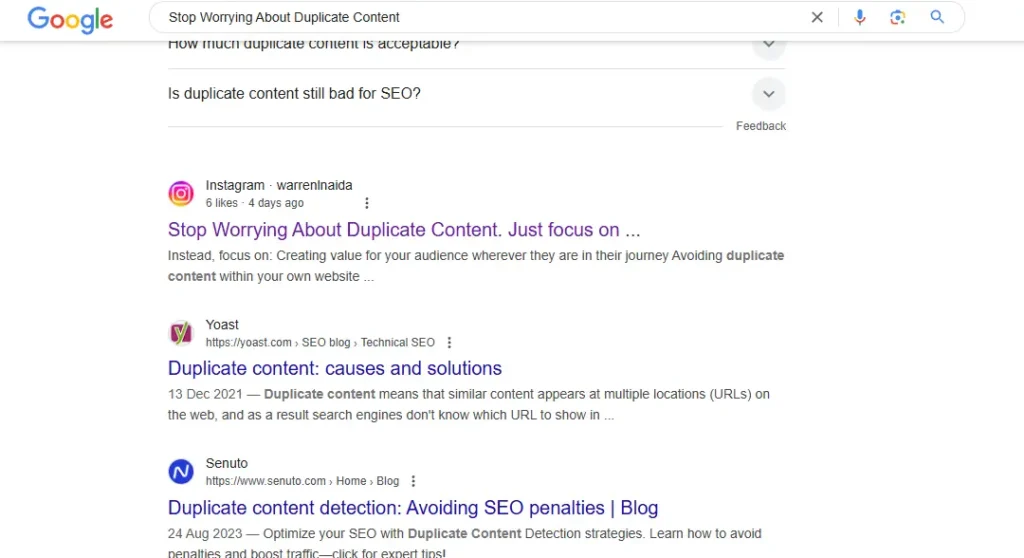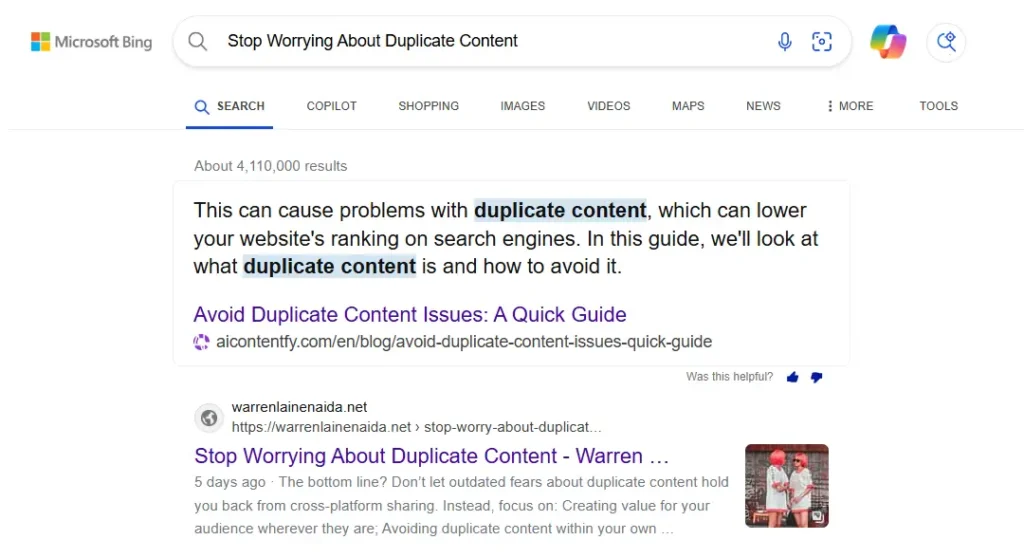Last Updated on February 7, 2025

This is a hobbyhorse of mine. I don’t think there is anything wrong with duplicate content – as long as your intent is on the level.
As Bridget Willard always reminds me, duplicate content is better than no content.
If you are interested in the topic of Duplicate Content, you might be interested in some of the other articles I have written, linked below.
Why You Should Stop Worrying About Cross-Platform Content Sharing
Remember when everyone freaked out about duplicate content? Let’s bring some clarity to this topic.
While there are legitimate concerns about duplicate content within your website, sharing your content across different platforms is an entirely different story that deserves your attention.
Let’s break down why cross-platform content sharing matters in today’s digital landscape.
Meeting People Where They Are in Their Journey
Think about the last time you made a major purchase decision. Did you go straight from discovery to purchase? Probably not.
You likely encountered similar information multiple times, each interaction building your confidence and understanding. That’s exactly why having your content visible in different places is crucial – the same person might need to see your message at different stages of their journey, and each platform serves a unique purpose in that process.
Search Intent is More Complex Than You Think
Here’s something fascinating about search behaviour: people use different platforms and search terms for the same underlying need. For example:
- A potential customer might search “how to fix a leaky faucet” on YouTube
- The same person might later search “plumbing parts near me” on Google
- They might then look up “best plumber reviews” on Yelp
Having your content optimized for each platform and search intent means you’re not missing out on any of these touchpoints.
“Understanding user intent within different target audience segments – and for a single customer – can optimize your SEO and content strategy for better engagement.” Understanding User Intent and Needs in a Target Group
Platform Dynamics Matter
While platforms traditionally preferred keeping users within their ecosystem, this landscape is evolving. Some platforms, like LinkedIn, have become more accommodating to external links. However, native content still often performs better for several reasons:
- It loads faster for users
- It’s more likely to be displayed in platform-specific formats
- It can take advantage of platform-specific features and engagement tools
The key is understanding each platform’s unique characteristics and adapting your content strategy accordingly.
Platform Case Study: Google, LinkedIn, and Bing
My 2-week-old LinkedIn article on link building outranks the identical 2-month-old article on my website.
I read a tweet by @lilyraynyc about how LinkedIn articles rank higher than the articles themselves. So I tried it.
Sure enough, my website article (Linkbuilding: Creating Content That Naturally Attracts Links) is not on page one of Google – but the identical article I posted on LinkedIn (Linkbuilding: Creating Content That Naturally Attracts Links) (6 weeks later) is.
Bing ranks only the original article on page 2, while the LinkedIn article is not listed. Thank you Bing!
Another example is this article on Duplicate Content. Again, Google lists a branded result instead of my website. In this case, Instagram. Bing on the other hand lists my website instead – and with a nicer snippet too.


“Content creators face a unique challenge: crafting material that resonates with human readers while also gaining visibility through algorithmic distribution systems.” Writing for People and Machines
The Myth of Perfect Timing
Here’s the truth about content visibility: there is no perfect time to reach everyone. Your audience isn’t sitting around waiting for your next post. They’re busy, distracted, and bombarded with information.
By strategically sharing your content across platforms and times, you’re increasing the chances of reaching people when they’re actually ready to engage.
An Important Note About Duplicate Content
Let’s clear up a common misconception: not all duplicate content is created equal. There’s a crucial distinction to make:
- Cross-platform sharing (posting your content on Medium, LinkedIn, your blog, etc.) is generally beneficial and won’t hurt your SEO
- Same-domain duplication (identical content on multiple URLs within your website) should be avoided as it can confuse search engines and impact your rankings
The bottom line? Don’t let outdated fears about duplicate content hold you back from cross-platform sharing. Instead, focus on:
- Creating value for your audience wherever they are
- Avoiding duplicate content within your own website
- Optimizing your content for each platform’s unique features and audience
- Monitoring platform-specific performance to refine your strategy
Remember: Your goal isn’t just to please search engines – it’s to help real people find the information they need, when and where they need it, while maintaining healthy SEO practices.
“How much duplicate content do ChatGPT, Gemini, and others create, and how can this affect your website’s SEO?” Duplicate Content and Why it Matters